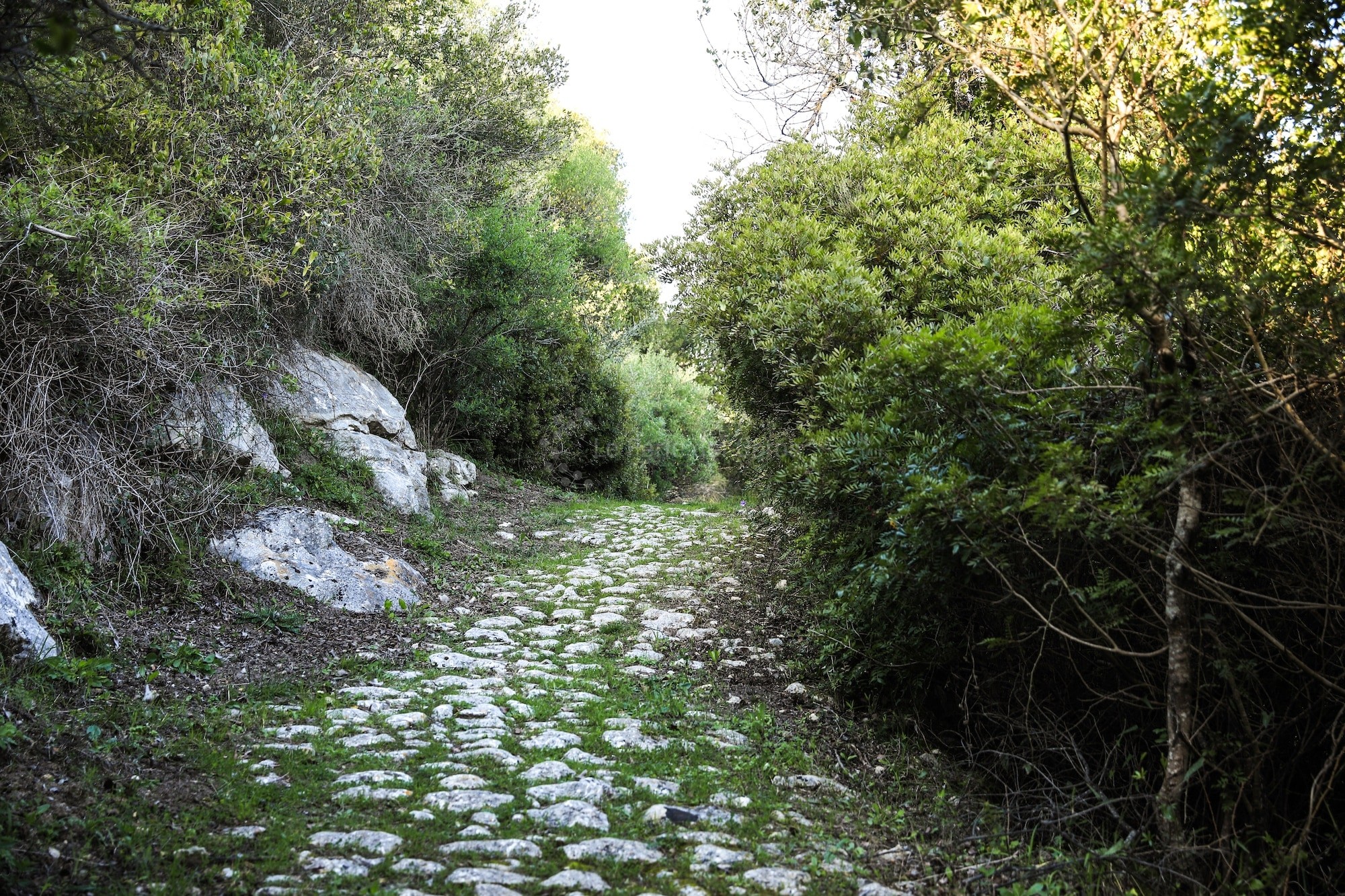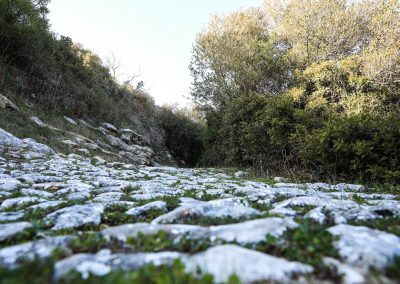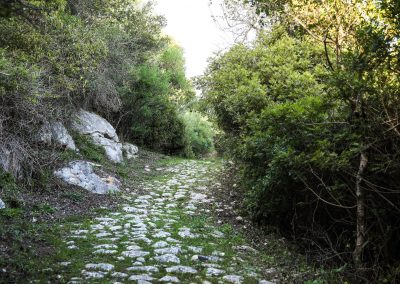
Cargeghe
Roman road of Sos Baiolos
The territory of Cargeghe contains a remarkable concentration of monuments of various periods including the Roman road of Sos Baiolos. The road is situated in the locality of Sos Baiolos and it continues for a length of about 600 metres in the direction of the nearby town of Ossi, accumulating a difference in altitude of about 80 metres with a series of little turns. At the beginning of the road, on the left, a hypogeal tomb is visible, dating back to the Late Neolithic (fourth-third millennium BC). The tomb called domus consists of an antechamber at the entrance, with an oval shape, leading into the central chamber with a square plan, from which two lateral niches extend, along with a central niche at the front. The presence of the domus de janas (tn* Neolithic tombs carved into rock called “houses of the fairies”) proves that the road of Sos Bajolos existed in a context of very ancient inhabitations. The road follows ancient Pre-Roman roads and by the way it was built, it could date back to any of the various time periods of Roman conquest of Sardinia.
The road surface is paved with medium size stones, flat and irregular, alternated with other smaller and less smooth ones. On the side that faces the valley, the road limit is indicated by rocks of bigger dimensions called “margines”, while the other side is interrupted by the slopes of the crags. The larger stones were polished more carefully and placed more or less at a regular distance of a few metres from each other. They were particularly well-finished in the curved sections: probably to anchor the bottom layer of the road to the ground level of the countryside, thus reducing the incline. In some places, the Earth’s rock surface is incorporated into the pavement. The road was used without interruption until the last century, especially during the first half of the 1900s. During an archaeological dig in 2005, ceramic fragments were found dated to the Roman Republican era (2nd- 1st century BC). Today, we can follow the ancient road until the second curve, from which it is possible to enjoy a wide view of the town from the top of the hill and of the surrounding landscape.
Source: academia.edu




